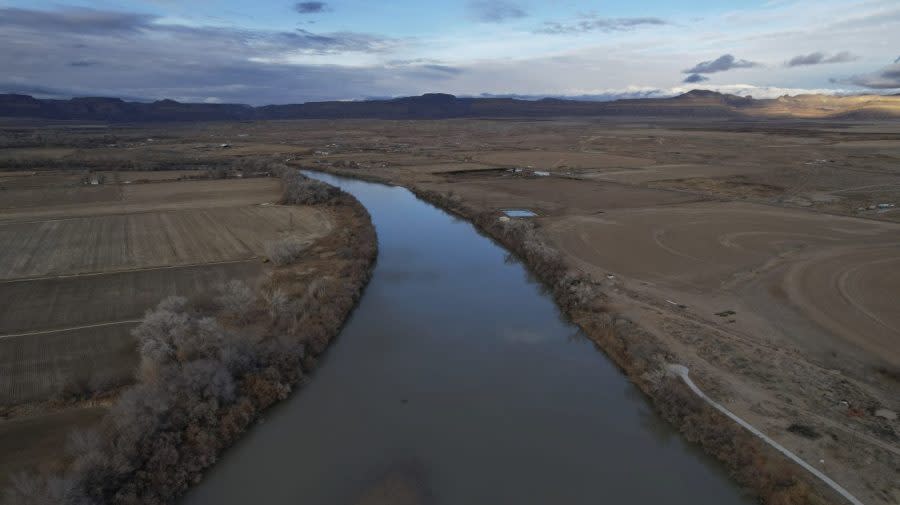Key Colorado River negotiator says talks must shift away from status quo amid ‘crisis’

As Colorado River Basin stakeholders scramble to formulate a long-term water conservation plan, the Centennial State’s main negotiator urged those at the table to be adaptable to change in an increasingly arid West.
“Some may like to continue the status quo or some version of it,” Becky Mitchell, Colorado’s Upper Colorado River commissioner, said at a Thursday webinar.
“We can’t do that,” Mitchell said.
The negotiations in question involve mandatory revisions to the Colorado River’s 2007 Interim Guidelines for Lower Basin Shortages — set to expire at the end of 2026 — which detail the quantities of water that users must conserve and when they must do so.
The states are expected to present consensus-based alternatives by next month to the Bureau of Reclamation, which has warned that it could otherwise proceed with its own proposals.
The alternatives would serve to inform the development of a draft environmental impact statement, which the federal agency said it intends to make public in December.
“The crisis on the Colorado River was essentially facilitated somewhat by the current guidelines and also Mother Nature,” Mitchell said.
Since the Bureau of Reclamation and the seven basin states approved those guidelines in 2007, overuse coupled with drought conditions have jeopardized the levels of two key reservoirs: Lake Powell and Lake Mead.
The Colorado River watershed — which serves 40 million people — is split into a Lower and an Upper basin, which respectively include California, Arizona and Nevada, and Colorado, Wyoming, Utah and New Mexico.
Among the reasons why the 2007 guidelines have failed, according to Mitchell, is that this agreement “tied the operations of Lake Mead and Lake Powell together — if less water is in Lake Mead, then more water is released from Lake Powell.”
“When there is overuse and drawdown in Lake Mead, Lake Powell gets drawn down as well,” Mitchell said.
This policy, she contended, eliminates “a level of certainty and security that we have across the entire system.”
Describing these operations as “out of touch with hydrological conditions,” she instead pressed for Lake Powell releases that reflect real need and are not dependent on conditions at Lake Mead.
This rebalance of water releases is one of Mitchell’s so-called “Irrefutable Truths” — the principles that she believes parties in both the Lower and Upper basins can support.
Among the other truths are an acknowledgment of climate variability, recognition that Lower Basin users are not more important than Upper Basin users and prevention of overuse in the Lower Basin — which historically includes the most senior “water rights” holder, the State of California.
This uniquely U.S. West “water rights” system — a relic of the gold rush era — enabled those who moved to the region to claim water in order of arrival, without considering their proximity to a given river.
Other truths touted by Mitchell include the preservation of water rights for tribal nations, compliance with environmental laws and the promotion of collaborations between the U.S. and Mexico, which also relies on Colorado River water.
Also critical from her perspective is the prevention of actions aimed at curtailing water allocations to the Upper Basin states.
“Our own water users do not have certainty in their supplies, and oftentimes get less than what they need,” Mitchell said.
“This is how it goes when you rely on snowpack instead of massive reservoirs,” she continued, referring to Lake Mead and Lake Powell, which serve the Lower Basin.
Mitchell credited Lower Basin officials for acknowledging what she described as a “structural deficit,” referring to comments made by at a Colorado River Water Users Association conference in December.
“There is a supply-demand imbalance in the Lower Basin,” JB Hamby, California’s lead negotiator, said at the time, as reported by The Colorado Sun.
Hamby, who is also vice president of the Imperial Irrigation District, added that the Lower Basin has reached a point of “recognition that we have to solve” this situation, according to the Sun.
Just last week, meanwhile, the Bureau of Reclamation revealed that 1.3 million-acre-feet of water are lost annually due to Lower Basin evaporation. For reference, the entire U.S. Colorado River allocation is 15 million acre-feet, while typical suburban households use 1 acre-foot each year.
Environmental variabilities, induced by climate change, are requiring states to adapt to a dynamic and unpredictable water supply, according to Mitchell.
“The bottom line is we can’t expect our water users to provide certainty to others when they do not have certainty themselves,” she added.
For the latest news, weather, sports, and streaming video, head to The Hill.


